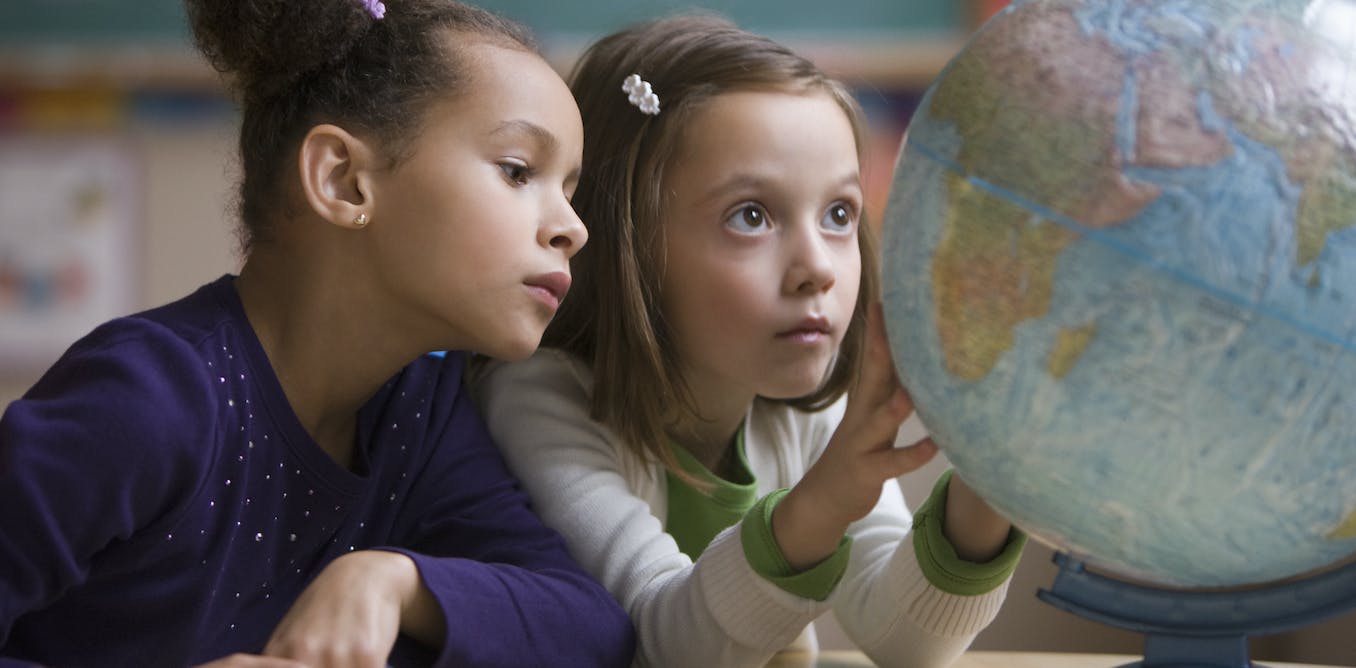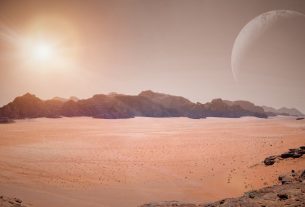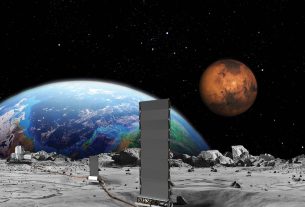Curious Kids is a series for children of all ages. If you have a question you’d like an expert to answer, send it to [email protected].
Why does the Earth spin? Sara H., age 5, New Paltz, New York
A globe was the first thing I ever bought with my own money. I was maybe 5 years old, and I was really excited to take it home. As I quickly discovered, you can spin it in the direction that the earth actually spins.
There’s an imaginary line between the North Pole and the South Pole. We call it the rotation axis. For the Earth, the rotation axis points toward a bright star, Polaris, which is visible on clear nights in the Northern Hemisphere.
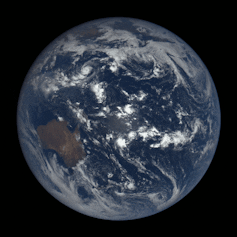
NASA/EPIC, edit by Tdadamemd
If you want to know which way to spin your globe, make the goofy “thumbs-up” sign with your right hand. Imagine your thumb is the Earth’s rotation axis, pointing to the North Pole. Your fingers will naturally curl around your hand, and the direction those fingers are pointing is the way Earth spins.
Every 24 hours, the Earth makes a full rotation, spinning west to east, which is why the sun rises in the east and sets in the west and the stars at night appear to move across the sky.
To understand why this happens, let’s see what we can learn from other bodies in space.
Everything spins
The Sun also spins. In fact, it spins in the same direction the Earth does.
Not only that, the Earth orbits the Sun in the same direction, as do all the other planets and more than a million asteroids and dwarf planets.
Most are spinning in the same direction, too. Jupiter and Saturn spin quite a bit faster than Earth, taking only about 10 hours to rotate. Saturn’s spin is a little bit tilted, so we get to see changing views of its rings over time.
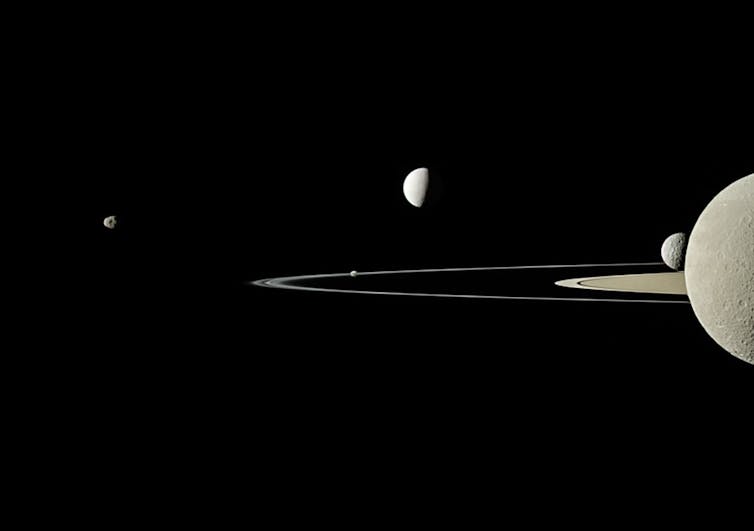
NASA/JPL-Caltech/Space Science Institute
There are two funky exceptions: Uranus appears to have been tipped over on its side. Nobody knows exactly how. Maybe it collided with another planet. Venus is also odd – it spins backward. We don’t know for sure whether it formed that way or got knocked over. Most scientists now think its spin has been reversed over time by tidal forces involving the Sun and Venus’ thick atmosphere.
All that leads astronomers like me to wonder: Is there something about how the solar system formed that kind of “baked in” that direction of spin?
Birth of a star
For more clues, we can look at a young star, one that is just forming its system of planets.
A famous one is called Beta Pictoris. It is surrounded by a thin disk of dust, gas and little bits called planetesimals; they range in size from a grain of sand to rocks maybe up to the size of a mountain. Astronomers are pretty sure the disk formed from material left over when the star was born.
Every star is born from a cloud of gas and dust that moves through space surrounded by other similar clouds. The force of gravity causes these clouds to tug on one another as they pass, which makes them slowly rotate.
Even when one of these clouds collapses to form a star, it continues to rotate. The star forms, spinning at the center of a flat pancake of rotating gas and dust called a protoplanetary disk. All of it – the star, the gas, the dust – is spinning in the same direction.
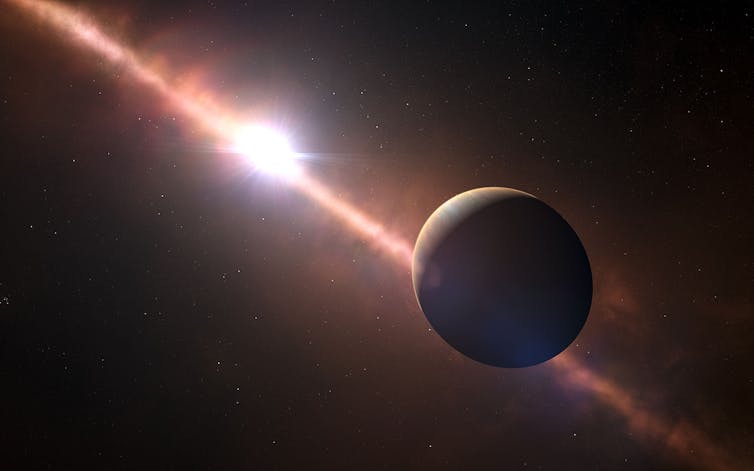
ESO L. Calçada/N. Risinger (skysurvey.org), CC BY
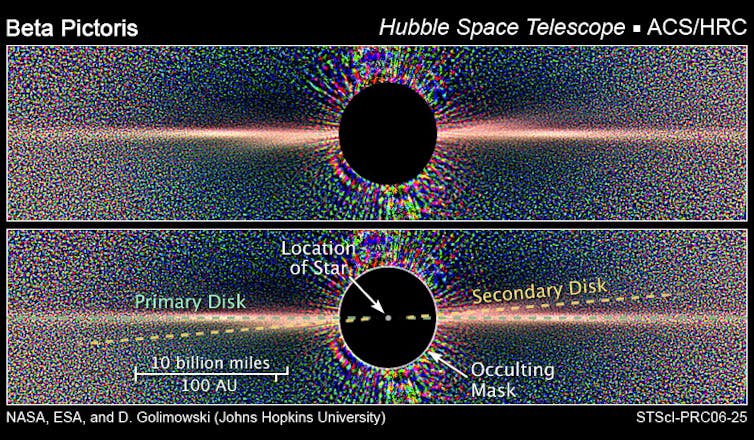
David Golimowski/Johns Hopkins University, NASA, ESA
Astronomers think that our solar system looked a lot like Beta Pictoris in its early years.
We think that inside the disk, the gas and dust can stick together in a process called accretion. As a baby planet starts to grow, it gets heavier, and its gravity attracts more and more little pieces.
When the baby planet gets massive enough, the force of gravity begins crushing it, making it denser. Because of that, like an ice skater drawing in her arms to spin, the planet spins faster. Rising pressure in the core causes the core to melt. Denser materials sink toward the core, and lighter materials float to the planet’s surface. We end up with a planet with an iron core surrounded by rock, and maybe on the outer parts stuff like water and ice.
That’s what we see in our solar system.
What if Earth didn’t spin?
Earth’s spin is important for life – mainly because it causes day and night. On planet Mercury, which spins very slowly, the same side always faces the Sun. That side gets baked to a crisp, while the other side is frozen in perpetual darkness.
Without rotation, we would also have no ocean tides. Without the daily ebb and flow of water, it’s possible life would never have emerged from the sea onto land.
So, astronomers believe Earth spins because the entire solar system was already rotating when Earth formed – but there are still a lot of questions about how planets’ spins change over time, and how spin affects the evolution of life. With more than 5,000 planets now known beyond the solar system, future scientists are going to be busy exploring.
Hello, curious kids! Do you have a question you’d like an expert to answer? Ask an adult to send your question to [email protected]. Please tell us your name, age and the city where you live.
